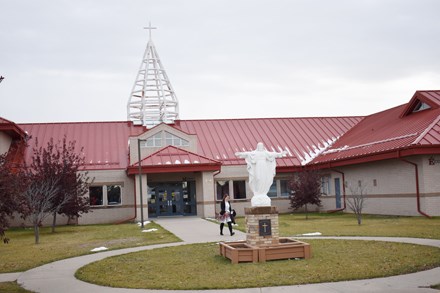By Dan Archer
During the recent Thanksgiving weekend, Collège Mathieu in Gravelbourg celebrated its 100-year anniversary. At the start of the 20th century, Bishop O.E – Mathieu, Archbishop of Regina, wanted to build an educational institution in Saskatchewan for French Canadian Catholic children.
In December 14, 1918 Mathieu’s vision was realized when the Gravelbourg Catholic College – dubbed as Collège Mathieu – opened for 67 French speaking male students from ages 5 to 13.
The institution became co-ed in 1970. Initially, the school was run by four Oblate nuns of the Sacred Heart and Mary Immaculate. The Oblate connection continued until 1976. Collège Mathieu is further distinguished by С����Ƶ the singular French-speaking residential school in Western Canada.
This school served as an important centre of learning for many in the Gravelbourg district since 1918. For a time, Collège Mathieu were linking their students to Laval University in Quebec City and the University of Ottawa. Until 1968, students could study for Bachelor of Arts degrees from these universities while living in Gravelbourg. The Pavillion also had chemistry and physics laboratories from 1946 to 1968.
J.E Fortin of Montreal designed the Pavillion – fabricated from bricks originating from Estevan. Like the Assiniboia Court House, the Pavillion’s trimmings were executed in Tyndall limestone.
The façade of the Pavillion is classically-influenced, with square piers marking the doorway. Other unique characteristics of the Pavillion include the three-sectioned Palladian window over the entrance. Originally, the structures on campus were designed in a respectful, classically-influenced fashion to enable a sense of fusion with the ecclesiastical buildings in town.
The school’s central building was built in 1920 over the old church’s basement, another historical feature of Gravelbourg – unfortunately, this structure was destroyed by fire in 1988. Thereafter, updated facilities were built on the campus, which became operational again in 1989.




